captdistraction
GrumpyRacer
Preface: I'm a huge believer in witness marking every important bolt in the car and using a good quality torque wrench when setting it, and only occasionally use German Values to set something where a torque wrench won't go. Also inspecting the car before and during each event (typically at EOD for the next day).
That all said, I've had a recent incident where a inexpensive lock nut cost me a few thousand dollars:
a watts link retaining bolt walked its nut loose (which was a standard nyloc, but had no additional loctite or secondary retaining method), one I had previously set and marked. During a long enduro race it worked itself loose until it was off, and the bolt moved enough to allow the watts-rod end to come loose and the lateral control of the axle was lost, while the car was at 10/10ths race pace.
The short of it was that both sides of the car's rear tub were hit by the wheels and tires, puncturing a tire at 94mph, heavily scoring a shock casing, lightly rubbing the driveshaft, damaging two wheels, and scaring the -redacted- out of me. There's no reason this bolt should have come loose, but somehow, it did. I think once it was the least bit loose, the cycle of the car being worked at an extreme level just quickly moved the bolt until it was gone.
As I put everything back together, I want to revisit how I set this up. Much of my suspension does not call for loctite (though brake fasteners, and many factory or factory-style fastener positions use it). I'm considering using something for ALL bolts and wanted to get some opinions on the experiences of others.
Which should I use for this stuff? Blue? Red? I want to ensure every critical bolt has a locknut/nyloc (or double nut if possible), some form of secondary locking material, and fresh witness marks.
Should I consider something even further like a nordlock or drilling and safety wiring critical fasteners? While I think my cautious approach previously worked in a HPDE scenario, in a race scenario where the hardware is pushed far past its design limits on the regular requires even more careful consideration. I don't take this stuff apart often, so I don't care about it being somewhat more difficult to service.
For fun, here's a few pictures:
what we found after the incident (the car had to be ditched behind a tire wall and eventually recovered at the end of the event)
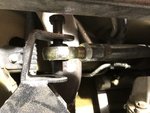
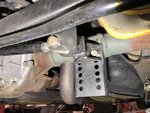
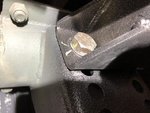
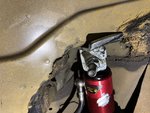
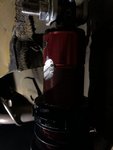
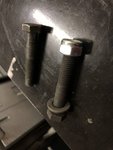
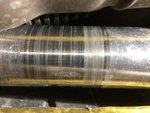
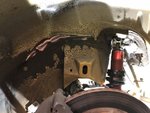
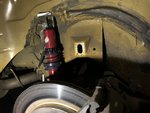
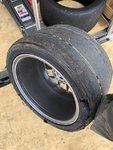
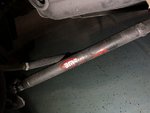
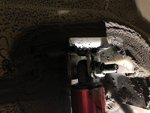
also before anyone questions the hardware in place, this wasn't something provided by the part manufacturer, but a bolt I put in place of what they provided. They used a fine thread 10.9 bolt, and I had changed to this coarse 12.9 bolt which may have contributed to the failure.
That all said, I've had a recent incident where a inexpensive lock nut cost me a few thousand dollars:
a watts link retaining bolt walked its nut loose (which was a standard nyloc, but had no additional loctite or secondary retaining method), one I had previously set and marked. During a long enduro race it worked itself loose until it was off, and the bolt moved enough to allow the watts-rod end to come loose and the lateral control of the axle was lost, while the car was at 10/10ths race pace.
The short of it was that both sides of the car's rear tub were hit by the wheels and tires, puncturing a tire at 94mph, heavily scoring a shock casing, lightly rubbing the driveshaft, damaging two wheels, and scaring the -redacted- out of me. There's no reason this bolt should have come loose, but somehow, it did. I think once it was the least bit loose, the cycle of the car being worked at an extreme level just quickly moved the bolt until it was gone.
As I put everything back together, I want to revisit how I set this up. Much of my suspension does not call for loctite (though brake fasteners, and many factory or factory-style fastener positions use it). I'm considering using something for ALL bolts and wanted to get some opinions on the experiences of others.
Which should I use for this stuff? Blue? Red? I want to ensure every critical bolt has a locknut/nyloc (or double nut if possible), some form of secondary locking material, and fresh witness marks.
Should I consider something even further like a nordlock or drilling and safety wiring critical fasteners? While I think my cautious approach previously worked in a HPDE scenario, in a race scenario where the hardware is pushed far past its design limits on the regular requires even more careful consideration. I don't take this stuff apart often, so I don't care about it being somewhat more difficult to service.
For fun, here's a few pictures:
what we found after the incident (the car had to be ditched behind a tire wall and eventually recovered at the end of the event)












also before anyone questions the hardware in place, this wasn't something provided by the part manufacturer, but a bolt I put in place of what they provided. They used a fine thread 10.9 bolt, and I had changed to this coarse 12.9 bolt which may have contributed to the failure.













